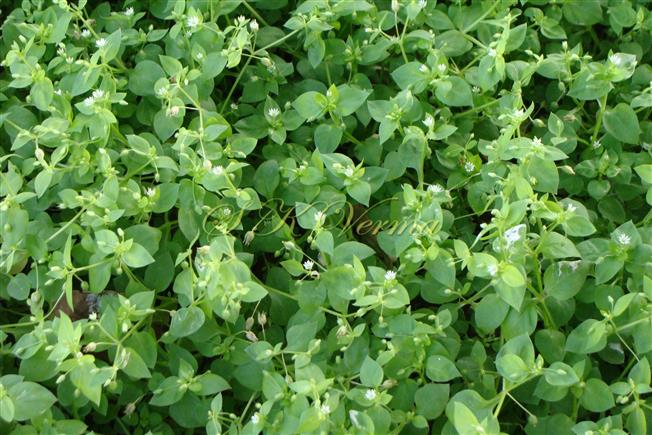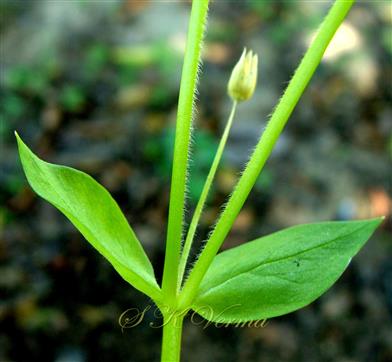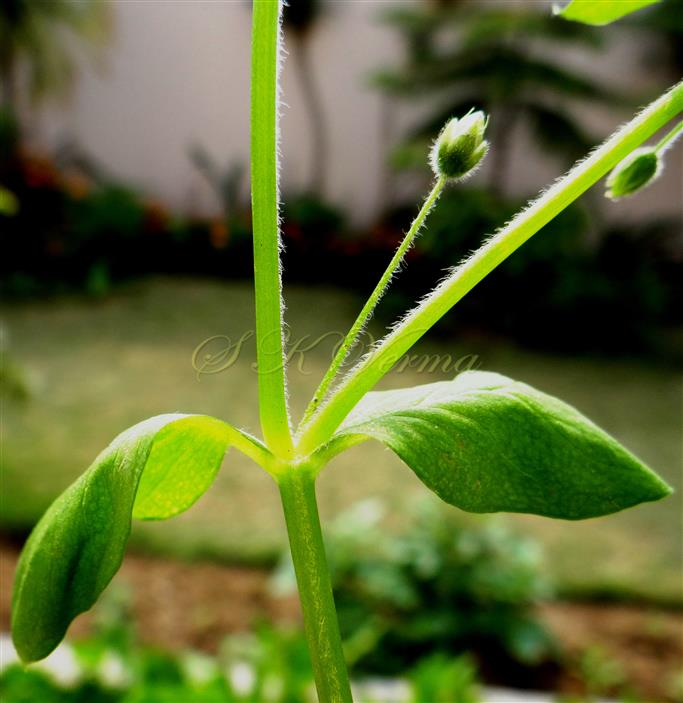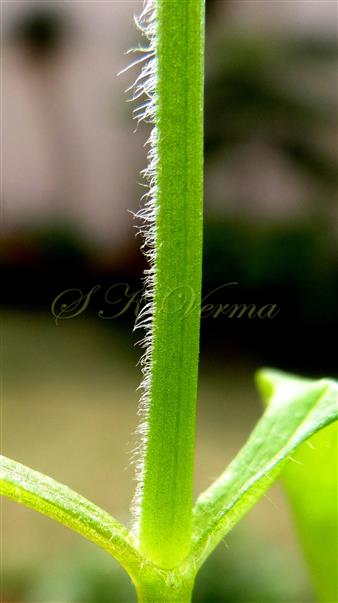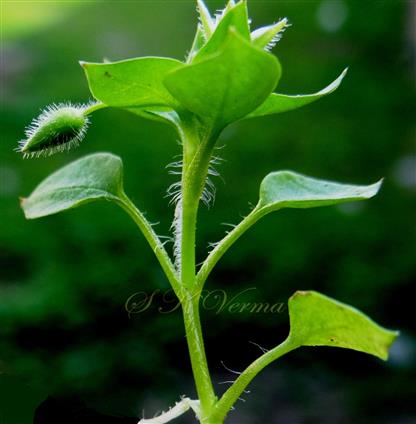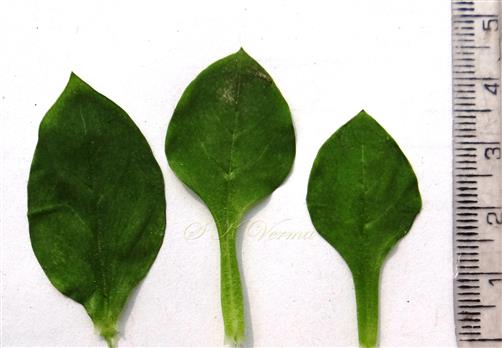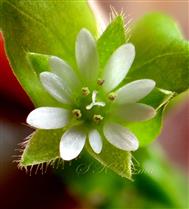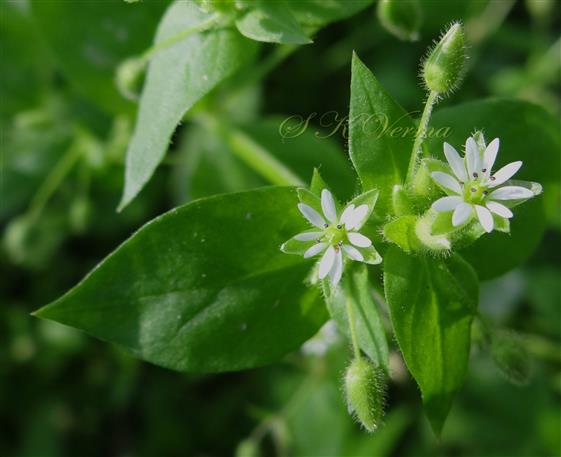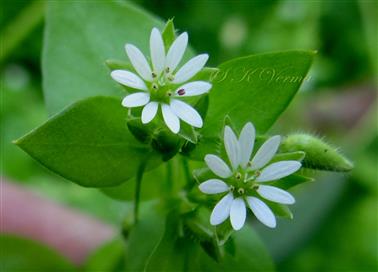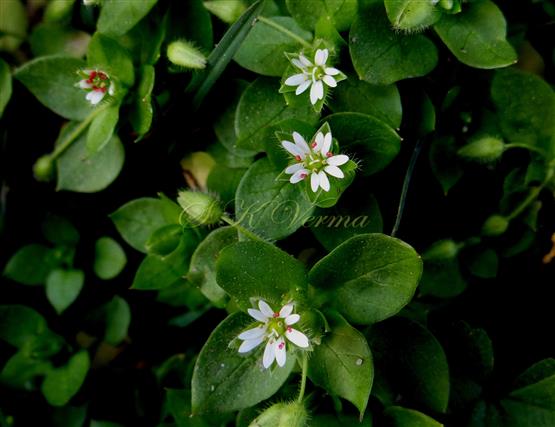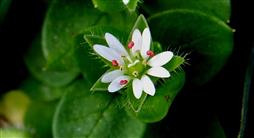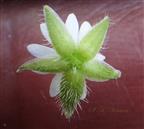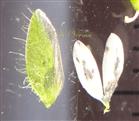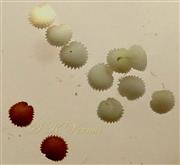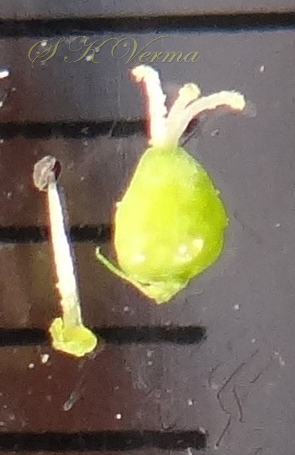Stellaria
Stellaria L., Sp. Pl. 1: 421. 1753; Gen. Pl. ed. 5. 193. 1754; Boiss., Fl. Or. 1: 705. 1867; Edgew. & Hook. f. in Hook. f., Fl. Brit. Ind. 1: 229.1875; Collett, Fl. Siml. ed. 2: 50. 1921 (Reprint 1980); Shilong & Rabeler, Fl. China @ eFloras. org 6: 11; Ghazanfar & Nasir, Fl. Pak. @ eFloras. org p. 20.
Annual or perennial herbs, glabrous or partially pubescent, rarely hairy. Stems angled, slender, erect, ascending or prostrate, weak, often diffuse, sometimes matted, a line of hairs usually running down between the joints. Leaves, at least the upper ones, sessile or nearly so, rarely long- petiolate; leaves compressed, variously shaped, rarely needle- like, exstipulate. Flowers actinomorphic, bisexual, pentamerous, hypogynous, white, in cymes, sometimes in panicles, seldom solitary; bracts immediately subtending calyx absent. Sepals 5 or 4, free, often viscidly pubescent. Petals as many as the sepals, rarely none, deeply 2-lobed except S. bulbosa. Stamens 10, sometimes fewer (2-5 or 6). Ovary sessile, 1-loculed, rarely 3-loculed when young, ovules numerous; styles usually 3, rarely 2 or 5. Capsules orbicular or ovoid, sometimes 3-5-celled at base, opening by as many valves as there are styles, the valves sometimes split at the tip. Seeds usually numerous and small, reniform, rarely 1 or 2 or few and larger.
171 species
Stellaria media
Stellaria media (L.) Villars, Hist. Pl. Dauph. 3: 615. 1785; Boiss., Fl. Or. 1: 707. 1867; Edgew. & Hook. f. in Hook. f., Fl. Brit. Ind. 1: 230. 1875; Blatter, Beaut. Fl. Kashm. 1: 230. 1874; Collett, Fl. Siml. ed.2. 52.1921 (Reprint 1980); Sharma & Kachroo, Fl. Jammu (Illustr.) 2: t. 29.1983; Kaur & Sharma, Fl. Sirmaur. 159. 2004; Singh & Sharma, Fl. Chamba Dist. 187. 2006; Fl. North Amer. @ eFloras. org vol. 5; Ghazanfar & Nasir, Fl. Pak. @eFloras. org p. 22.
Winter annual herbs. Stems decumbent or ascending, 10-30(-60) cm, diffusely branched, 4- angled, with single line of hairs along each internode. Proximal leaves petiolate, petioles up to 1.8 cm long, petioles keel-shaped, margin ciliate, adaxially sparsely hairy rarely, distal leaves +/- sessile; blades ovate to broadly elliptic, 0.5-4 cm x 0.2-2 cm, base cordate, round to cuneate, margin entire, apex acute or shortly acuminate, glabrous or sparsely pubescent, especially on the nerves or margin ciliate at base. Flowers in sparse axillary or terminal cymes; bracts ovate with apex acute to acuminate, 1-20(-40) mm, herbaceous; pedicels usually straight, deflexed at base in fruit, 10-20(-40) mm, usually with a line of hairs. Flowers 6-7 mm across, white, actinomorphic, bisexual, pentamerous, hypogynous. Sepals 5, midrib obscure, ovate-lanceolate, 4-5 mm, margins narrow, membranous/ scarious, apex acute to slightly obtuse, abaxially glandular- hairy. Petals 5, white, 2-cleft nearly to the base, lobes equal or unequal, nearly oblong, shorter to or subequalling sepals. Stamens 5,6, 8-10, free, filaments ca. 1.3 mm long, anthers blue or red-violet. Ovary ovoid to orbicular, 1-locular, many ovules, free central placentation; styles 3, outwardly curved, 05-1 mm. Capsules green to straw-coloured, ovoid-oblong, 3-5 mm, somewhat longer than sepals, opening by 6 valves nearly to the base; carpophore/ gynophore absent. Seeds reddish-brown, broadly reniform to round, 1-1.5 mm in diameter, tubercled.
Common Names: Common Chickweed, Chickenwort, Craches, Maruns, Starweed, Star Chickweed, Passerina, Winterweed; Buch-bucha (Hindi)
